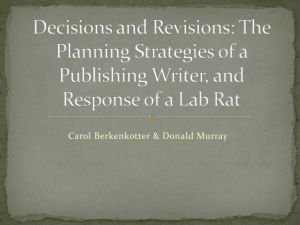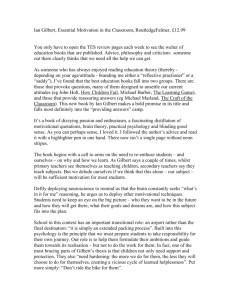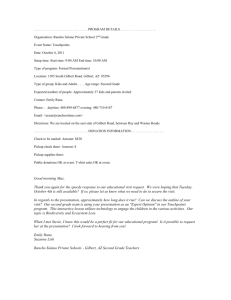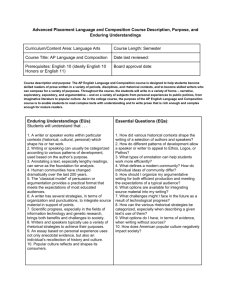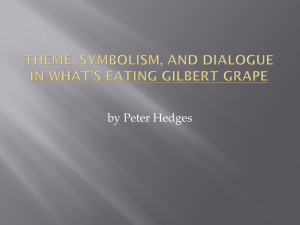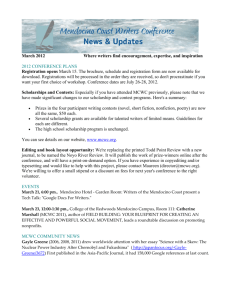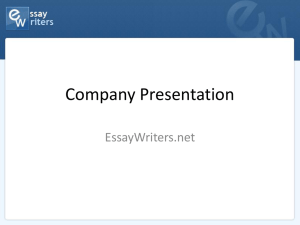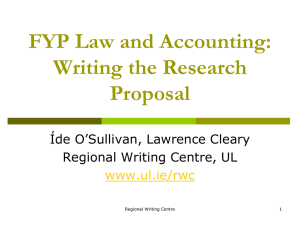Sample Annotated Bibliography (DOC)
advertisement
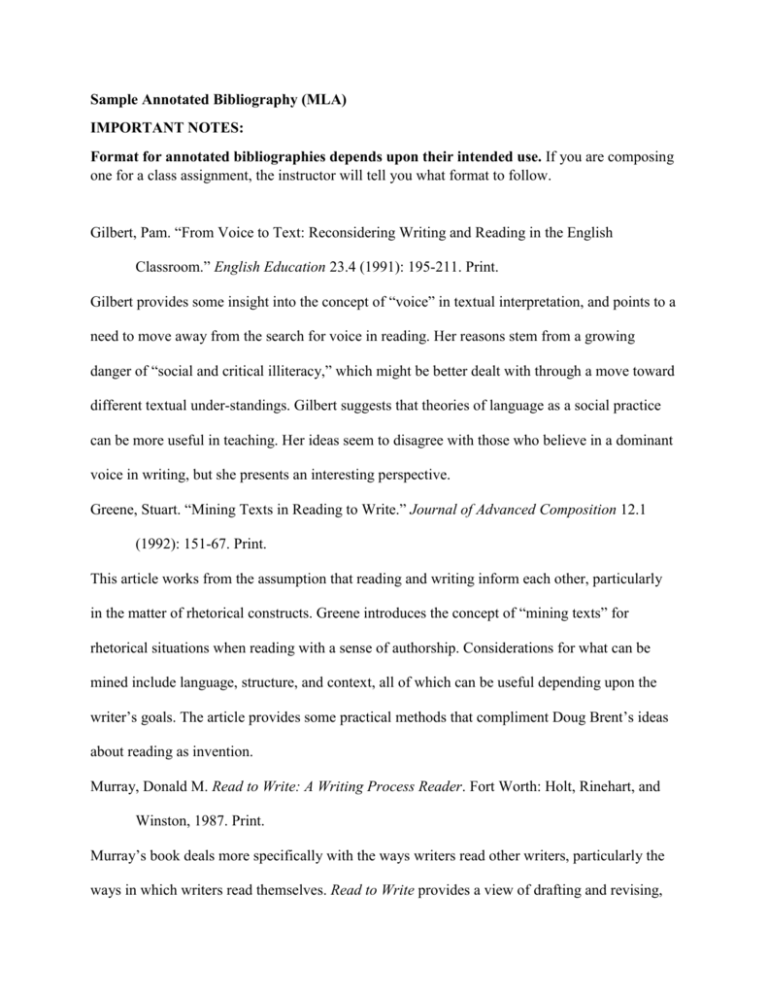
Sample Annotated Bibliography (MLA) IMPORTANT NOTES: Format for annotated bibliographies depends upon their intended use. If you are composing one for a class assignment, the instructor will tell you what format to follow. Gilbert, Pam. “From Voice to Text: Reconsidering Writing and Reading in the English Classroom.” English Education 23.4 (1991): 195-211. Print. Gilbert provides some insight into the concept of “voice” in textual interpretation, and points to a need to move away from the search for voice in reading. Her reasons stem from a growing danger of “social and critical illiteracy,” which might be better dealt with through a move toward different textual under-standings. Gilbert suggests that theories of language as a social practice can be more useful in teaching. Her ideas seem to disagree with those who believe in a dominant voice in writing, but she presents an interesting perspective. Greene, Stuart. “Mining Texts in Reading to Write.” Journal of Advanced Composition 12.1 (1992): 151-67. Print. This article works from the assumption that reading and writing inform each other, particularly in the matter of rhetorical constructs. Greene introduces the concept of “mining texts” for rhetorical situations when reading with a sense of authorship. Considerations for what can be mined include language, structure, and context, all of which can be useful depending upon the writer’s goals. The article provides some practical methods that compliment Doug Brent’s ideas about reading as invention. Murray, Donald M. Read to Write: A Writing Process Reader. Fort Worth: Holt, Rinehart, and Winston, 1987. Print. Murray’s book deals more specifically with the ways writers read other writers, particularly the ways in which writers read themselves. Read to Write provides a view of drafting and revising, focusing on the way a piece of writing evolves as an author takes the time to read and criticize his or her own work. Moreover, the book spotlights some excellent examples of professional writing and displays each writer’s own comments on their own creations, in effect allowing the student reader to learn (by reading) the art of rereading and rewriting as exemplified by famous authors. Newell, George E. “The Effects of Between-Draft Responses on Students’ Writing and Reasoning About Literature.” Written Communication 11.3 (1994): 311-47. Print. This study reflects the advantage of teacher responses on student papers. When reflected upon as “dialogue” questions to the student, these comments can lead to further interpretation and deeper understanding of a text. Newell found that responses which prompted students to work from their initial drafts brought about more final papers than teacher responses that led them away from their initial drafts with “directive” remarks. Source: BCC-UCF Writing Center http://uwc.cah.ucf.edu

